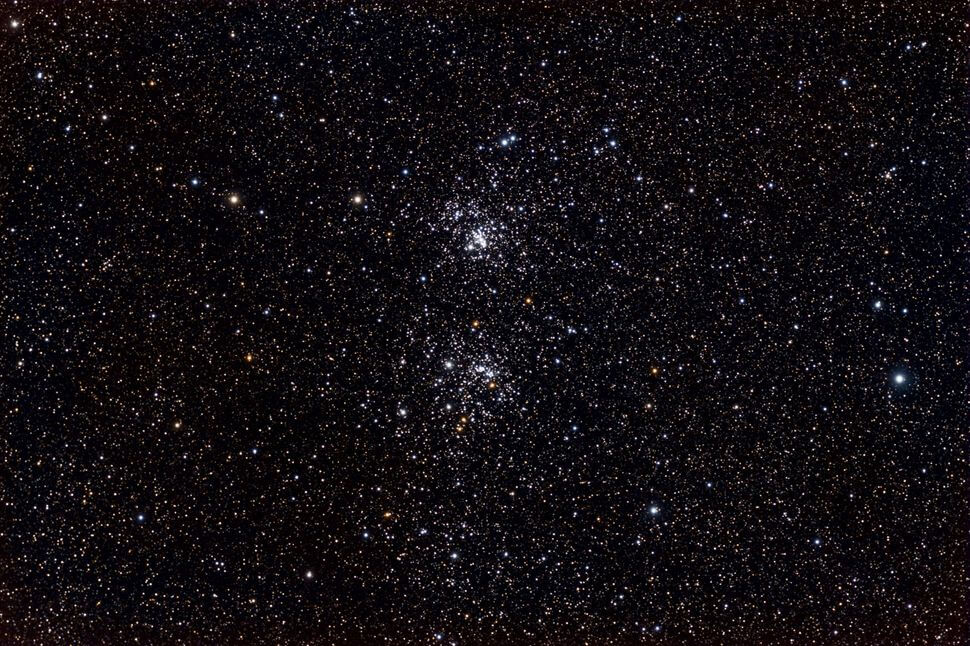If you were among the countless numbers of people who spent time last week looking for Perseid meteors, you doubt took notice of a striking stellar arrangement in the northeastern part of the sky: A zigzag row of five bright stars marking the Queen of Ethiopia, Cassiopeia.
Few star patterns have a shape so easy to remember: a neat “M” or “W” depending on its position and which way you’re facing. The Greeks added a nearby additional fainter star to the five main stars, so that the six together outline Cassiopeia’s Throne.
At this time of the year, as Cassiopeia ascends the late evening sky, around 11 p.m. local daylight time, I actually think she resembles a sort of crooked number 3. At the break of dawn, you’ll find her nearly overhead, soaring high above Polaris, the North Star and most resembling an “M.” At that time, even those living as far south as 20 degrees south latitude can see the Queen, hovering directly above their northern horizon. Cassiopeia circles in the north opposite to the Big Dipper, and so near to the pole that, like the Dipper, she too, never goes below the horizons of mid-northern latitudes.
The Double Cluster
Cassiopeia lies almost completely within the Milky Way, embedded within some marvelous star fields. In contrast to the region around Sagittarius, which marks the center of our galaxy, in this area of the sky we are looking out toward the outer edges of our galaxy.
Nonetheless, I can’t think of a better place to start observing on a clear, crisp autumn night than Cassiopeia. If you own a pair of binoculars, there is excellent “sweeping” all through this part of the sky.
One object that will immediately catch your attention actually belongs not to Cassiopeia, but to an adjacent pattern of stars that represents her future son-in-law, Perseus. If you extend an imaginary line roughly 1.5 times the distance from the star Gamma to Delta Cass (also known as Ruchbah) and beyond, you’ll come across a faint blur of light which binoculars will readily reveal as two magnificent clusters of stars.
An even more beautiful spectacle awaits you with a small telescope with low power. Popularly known simply as “The Double Cluster” it is indeed, one of the most brilliant telescopic sights in the sky.

Deep-sky authority Walter Scott Houston (1912-1993), who had a regular column in Sky & Telescope magazine for nearly half a century once wrote of this part of the sky:
“One can look for a long time at the many doubles, the colors, the winding patterns, as the dense cores of the cluster thin out slowly to merge finally in the star-rich background of the galaxy itself. Gazing at these clusters produces a succession of feelings too subtle and too complex to be captured by words alone.”
Interestingly, the Double Cluster lies close to the radiant or apparent emanation point of the Perseid meteors.
An abundance of heavenly attractions
But try not to spend all your time on the Double Cluster (as hard as that might seem to be!) for there are other fine clusters of stars intermingled within Cassiopeia. Concentrate especially on that area between Ruchbah and Epsilon Cass for a beautiful field of stars, which includes the galactic star cluster M103 as well as a couple of nearby smaller star clusters.
An imaginary line extending roughly the same distance out from Alpha (also known as Schedir) to Beta (also known as Caph) Cass will lead you to M52, or the Scorpion Cluster, considered to be one of the richer and more compressed of the open star clusters and located in this rich Milky Way field.
There is also an extremely rich swarm of faint stars not too far to the west of Caph, known as NGC 7789. Discovered in 1783 by William Herschel’s sister Caroline, it has been described as appearing like a large cloud of small stars on a ground of stardust. In his classic observing handbook “Cycle of Celestial Objects,” Admiral William H. Smyth (1788-1865) called it “a glorious assemblage … with spangly rays of stars … a vast region of inexpressible splendor.”
From descriptions such as these, it is obvious that you’ll certainly enjoy exploring the region around Cassiopeia on dark nights. An amazing profusion of celestial treasures awaits you. Such treasures indeed seem especially fitting for a Queen!
If you want to see these treasures for yourself, be sure to take a look at our guides to the best telescopes and best binoculars to help you find the optics best for you.
And if you want to photograph these celestial spectacles, be sure to read our guide on how to photograph the night sky as well as guides to the best cameras for astrophotography and best lenses for astrophotography.
Joe Rao serves as an instructor and guest lecturer at New York’s Hayden Planetarium. He writes about astronomy for Natural History magazine, the Farmers’ Almanac and other publications.